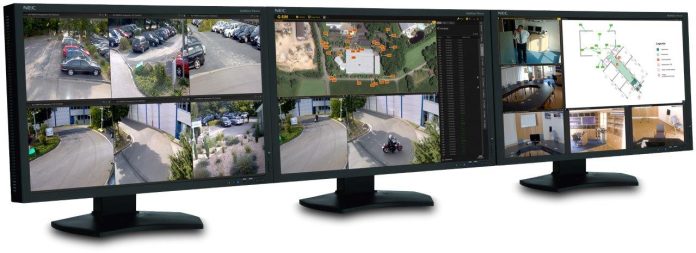Video management systems are the interface between the raw data of camera inputs and storage bins, and security management teams. The latest generation of VMS solutions is notable for its functional power and operational simplicity. And the best is yet to come.
GLOBALLY, the VMS market is worth between $US700m-1b with Milestone and Genetec sharing the largest slice of the market, followed by ONSSI, Verint and Nice Systems. There are a number of other developers including Geutebruck, Axxon, DVTel, IndigoVision and Avigilon whose VMS solutions have a long histories and excellent reputations. In all there are about 70 VMS manufacturers offering a swathe of solutions at multiple price points.
Over the past 12-18 months something that has been increasingly clear when working with video management systems is their enhanced capabilities in lock-step with increasing levels of operational intuition. I’m seeing excellent features like mapping, video analytics and layers of integration, which combine with increasingly simple operation.
Something else I’ve noticed in the near past is a combination of the firmware-based functionality of IP cameras melded with video management solutions. This allows deep control of camera parameters from workstations. While some of this functionality is set and forget, there are other aspects of camera performance that should be tweaked by capable operators depending of local conditions, including time of the day, time of the year and changing threat levels.
Another key tidal trend is towards open systems. There were a handful of open systems pioneers that rejected the development of proprietary management solutions. For these companies, open platform was a niche. Their VMS would work with any camera, any encoder, with any ancillary hardware. Today, many hardware manufacturers build VMS solutions that are hardware agnostic but those companies whose entire businesses are dedicated to the ongoing development of open VMS still lead the field in my opinion, with perhaps 5-6 exceptional open platform solutions from hardware manufacturers in the running.
In this feature we’re going to talk to manufacturers about some of the benchmark video management solutions that are available today, taking a look at a handful of their key strengths. We’ll talk about things like maximum possible inputs, support for multiple camera technologies (analogue, HD-SDI, IP, HD-CVI, etc), as well as integration of access events, automation capability, analytics including license plate recognition, mapping and potential for user and integrator development.
Who’s got what?
Kobi Ben-Shabat of Hills OPS has been distributing and supporting Genetec VMS solutions for many years. Ben-Shabat says Genetec Security Center is the company’s flagship solution.
“Genetec Security Center merges 3 main security applications, including video surveillance, access control, and license plate recognition, in a single intuitive solution,” he explains. “The platform can also incorporate third party security and business systems for a completely unified management solution.
“What sets this system apart is that Security Center is Genetec’s unified security platform that seamlessly blends IP security surveillance systems into a single intuitive interface to simplify your operations.”
According to Ben-Shabat, end users should seek VMS solutions that are feature-rich, offer enterprise capabilities yet are extremely easy to use. Meanwhile, for installers what’s important is a VMS that is easy to install, reliable and that end users find easy to use.
“Genetec ticks all these boxes,” Ben-Shabat says.
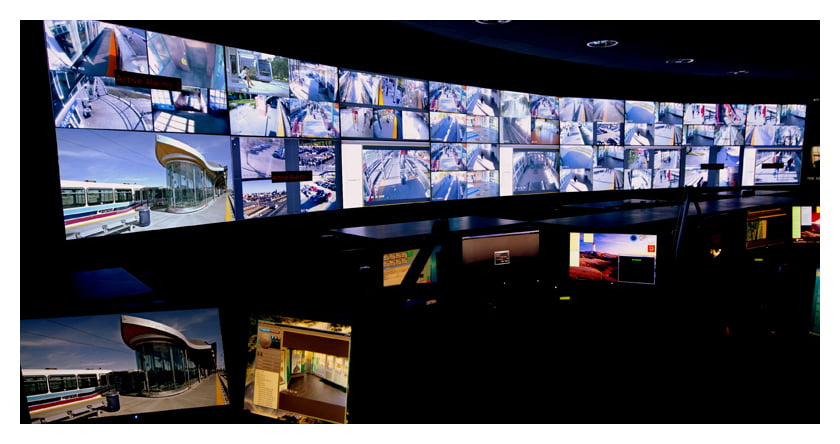
Genetec monitoring Calgary light rail
Something that end users need to take into account with VMS is up-front or annual per-input license fees and what sort of benefits accrue from them. Each solution is different in this regard. Some systems come with no ongoing fees but may receive little ongoing development and support. Users need to look for a solution that will be constantly improved and enhanced, as well as being supported 24-hours. To this end, price should not be the only consideration.
“With Genetec Security Center, the only on-going fee is the SMA (software maintenance agreement) which is not compulsory,” explains Ben-Shabat. “But an SMA will entitle you to upgrade to the latest and greatest version at no charge. It entitles you to direct support from Genetec and ensures your software is kept up to date as new cameras are introduced to the market.”
“Security Center is Genetec’s unified security platform that seamlessly blends IP security surveillance systems into a single intuitive interface to simplify your operations.” Kobi Ben-Shabat
One of the biggest trends in VMS today is intelligent video analytics. IVA is a technology we’ve been hearing about for decades. In the past it has always been constrained by challenges of integration, lack of processing speed and patchy performance. In 2014, things have changed. IVA is ubiquitous and key features including LPR are being specified into tenders.
According to Ben-Shabat, IVA is a key trend at the moment in terms of the ongoing development of the Genetec solution.
“Yes, absolutely,” he says. “Genetec is integrated to a wide range of leading analytic companies. This is a growing trend as analytics helps minimise man hours and makes alarm management more efficient.”
Over at Camvex, Andrew Del Biondo says that Freedom VMS is an Australian-manufactured CCTV software solution that supports 6 currently available CCTV technologies including analogue, 960H, IP, HD-SDI, HD-CVI and HD-TVI across multiple brands.
“Freedom VMS system size can range from 1 to thousands of cameras and the solution offers alarm integration support, as well as eMaps with operation for both live monitoring and playback,” Del Biondo explains.
“What sets Freedom VMS apart from the opposition in my opinion is price, simplicity, support for multiple CCTV technologies and eMap playback.
“And there are no recurrent costs for Freedom VMS, which is an important issue for our customers,” he says. “Software upgrades are available free from our website and users have the option to enter into a support agreement with our resellers if required.”
“Freedom VMS system size can range from 1 to thousands of cameras and the solution offers alarm integration support, as well as eMaps with operation for both live monitoring and play back.” Andrew Del Biondo
Del Biondo doesn’t see analytics as a key trend in Freedom VMS’ development at this time. Instead he argues end users should be looking for value for money and intuitive operation of core functions. Key features installers need to focus on include value for money, simple system setup and good technical support.
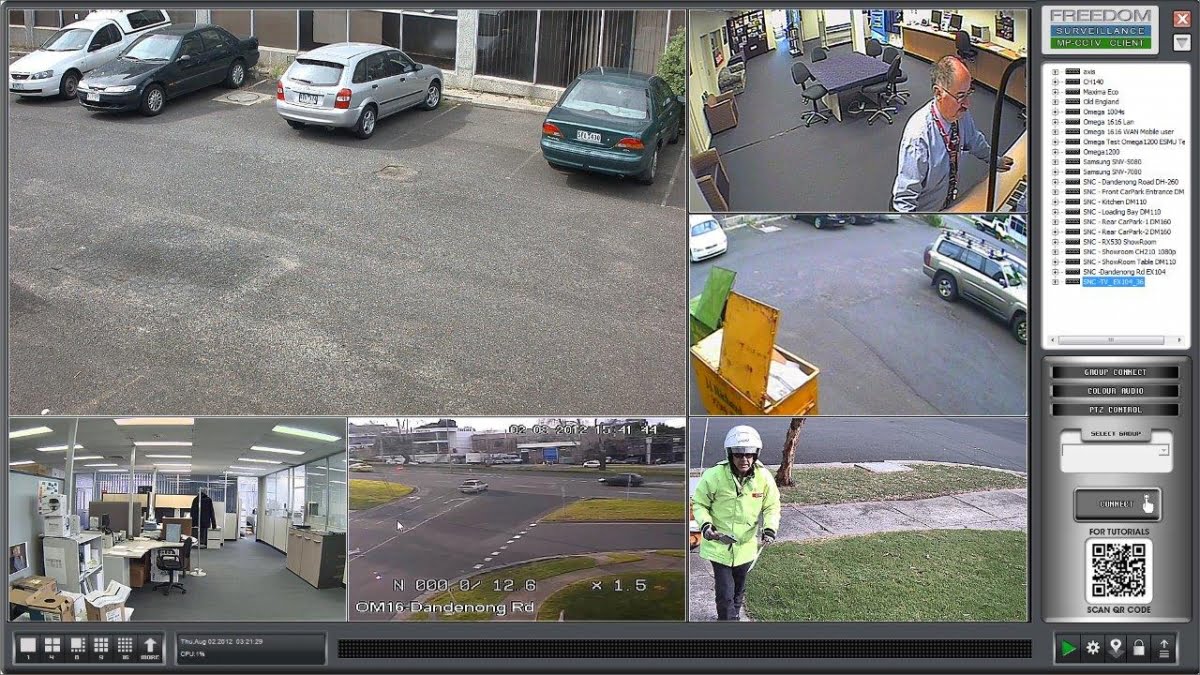
Australia's Freedom VMS
Another of the pioneers of open platform VMS design is Milestone Systems. Milestone XProtect 2014 VMS is delivered with 3 customizable client interfaces including XProtect Smart Client, XProtect Web Client and Milestone Mobile with video push capability (using smartphone cameras to push video to XProtect or vice versa, which Milestone says is ideal for roaming security staff and first responders.
The company’s Milestone XProtect 2014 video management software suite supports unlimited numbers of cameras, encoders and DVRs – more than 3,600 models from more than 130 manufacturers, according to Christian Bohn, Milestone’s VP marketing & strategic alliances.
“The Milestone Integration Platform Software Development Kit (MIP SDK) enables integration with unlimited third-party systems and devices such as access control, video analytics, biometrics, Point-of-Sale, ERP, RFID, HVAC, laser scanners, GPS locators, gunshot detection and more.
“XProtect VMS features include automatic configuration wizards, customizable rules engine, centralized and local management, Milestone Federated Architecture and Milestone Interconnect and active directory support with flexible/tiered user rights management,” Bohn explains.
“XProtect Smart Wall has multi-layer interactive maps, alarm manager, motion detection and privacy masking, smart search and Milestone Sequence Explorer, 2-way audio, scalable multi-server solution, edge storage and video metadata support, encrypted video storage, bookmarking, storyboarding, evidence lock, multiple video export formats, while Milestone Customer Dashboard allows online system monitoring for optimal operations and reporting.”

Christian Bohn of Milestone
According to Bohn, Milestone XProtect VMS is reliable and proven in thousands of customer installations worldwide and has been listed as a global leader by IHS Inc. market research repeatedly since 2006.
“Our open platform technology and business model mean that Milestone customers can choose from the widest options in hardware, integrations and partners to fit any budget – and to upgrade their solution over time, leveraging the original investment as needs change and new innovations come out in the market,” says Bohn.
“The Milestone SDK is a big differentiator, including training, and certifications of Milestone Solution Partner offerings include documented test results with best practice guidelines.
“In terms of license fees, Milestone has a one-time license fee for perpetual use with the opportunity to buy different software upgrade plans and technical support.”
Bohn certainly sees video analytics as a key trend at the moment.
“Video analytics are seeing more uptake these days with prices and availability having improved,” he explains. “Analytics helps to filter the most important data from the video, saving on bandwidth and storage, cutting search times, and enabling easier investigations. Milestone Systems lists many types of video analytics integrations with XProtect VMS in the online Solution Finder, from more than 30 different video analytics companies.”
Bohn has a clear idea of what end users should be looking for in a VMS solution.
“A full product suite to give the most options in pricing and functionality covering all needs, big or small, simple or complex,” he says. “End users want reliability, flexibility, scalability and freedom of choice to grow and expand with integrations over the long run. You also want a fully documented SDK for doing the integrations and a comprehensive training program for partners that ensures ongoing expertise.”
Installers should be looking for different things, according to Bohn.
“Partners need solid support from software vendors, both in sales leads and activities like webinars, events and road shows, marketing and PR that keeps the brand and solutions visible and known in the market (making sales easier),” Bohn says.
“They also need good sales collateral, training and follow-up technical support for implementation, maintenance and upgrades. Regular upgrades like ongoing device pack releases and new software features also mean continual business opportunities for partners.”
“XProtect VMS features include automatic configuration wizards, customizable rules engine, centralized and local management, Milestone Federated Architecture and Milestone Interconnect and active directory support with flexible/tiered user rights management.” Christian Bohn
At Q Security Systems the chosen VMS is DVTEL Latitude NVMS which according to QSS Victorian branch manager, Ian Fuller, is a scalable solution from a few cameras to hundreds or thousands of cameras.
“Latitude is an open platform that supports all leading camera vendors, is ONVIF Profile S compliant, and offers the most comprehensive SDK for any type of integration,” says Fuller. “DVTEL has extensive experience in integrating with access control systems, video analytics, GIS systems, license plate recognition programs and perimeter systems by employing an extensive range of communication protocols to connect to other systems (TCP/IP, XML, Restful API, text files and more).
“What makes DVTEL Latitude VMS better than the opposition is that DVTEL is a complete solution from the camera lens to the human eye – it’s the most open complete solution on the market today,” Fuller says.
“As well as being a leading VMS, DVTEL has focused on creating a modern NVR for the smaller size systems, but still built of the core of the Latitude Enterprise system – Meridian and Horizon. DVTEL has a customer-focused attitude to service with VMS and NVR offerings providing a complete solution for major sites that also need a solution for smaller satellite sites.”
From Fuller’s perspective, there is a trend towards analytics.
“We see an increasing trend in project specifications for video analytics,” he says. “And with DVTEL we are able to offer multiple video analytics solutions; ioimage edge based analytics, DVTEL SVA server based analytics and now we have seen the introduction of DVTEL Thermal cameras.
“What makes DVTEL Latitude VMS better than the opposition is that DVTEL is a complete solution from the camera lens to the human eye – it’s the most open complete solution on the market today.” Ian Fuller
“DVTEL also integrates to 3rd party Video Analytic systems. DVTEL sees a trend towards video analytics with HD image quality and is about to release modern Quasar HD Cameras with ioimage built-in.”
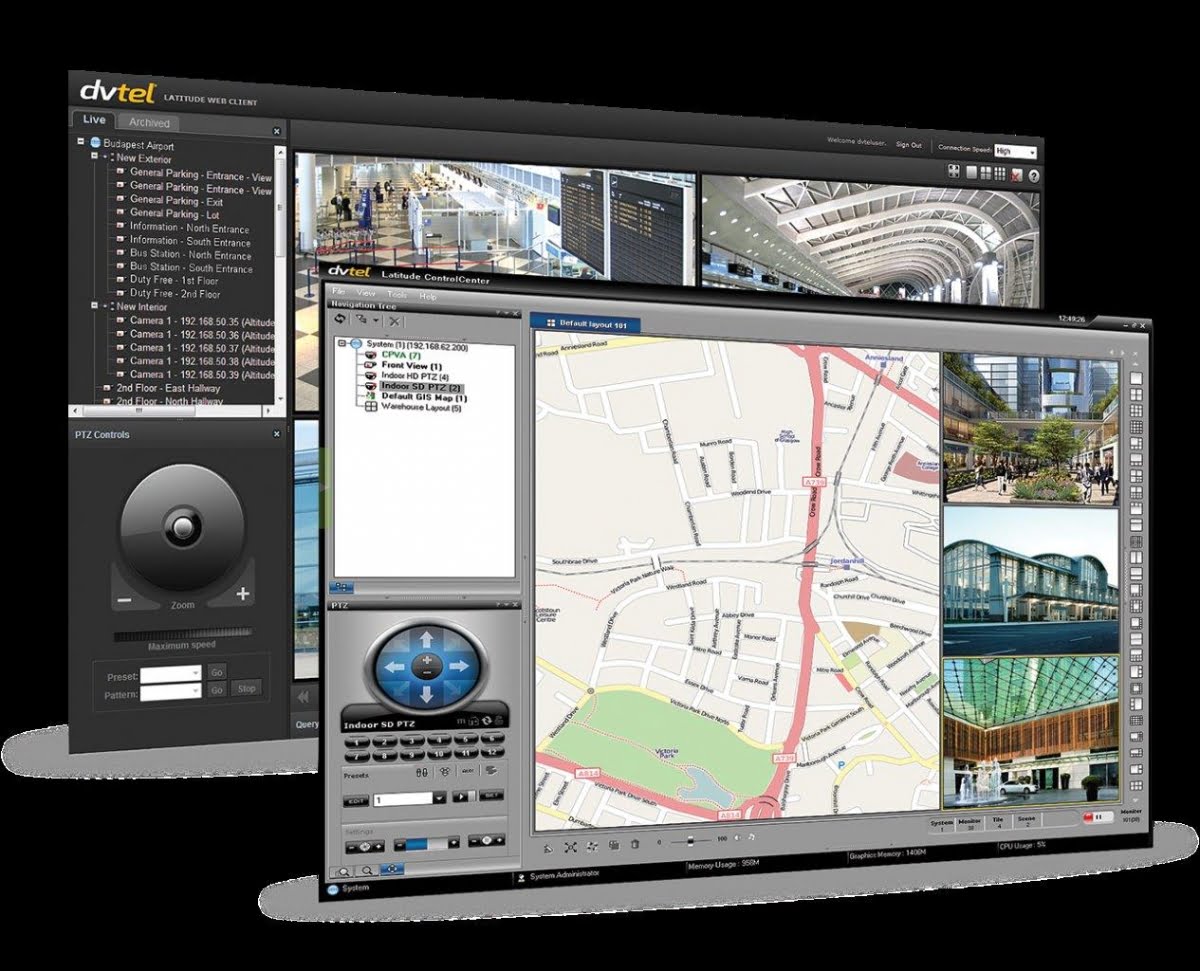
Like others, Fuller maintains that end users need a system that’s powerful and dependable.
“Users will want a system that is a proven platform, reliable and scalable,” Fuller says. “Having an open system that does not lock them in to one camera vendor is also important. Users also need a system that is future-proof – the system has to meet the needs of the customer today, but will grow as their needs change without having to replace the initial investment.
“At the same time, installers need a system that is easy to install and robust,” says Fuller. “They want to deliver a professional solution on time and on budget. Aside from the Latitude VMS, DVTEL in the last few years has placed focus on proving a modern NVR solution that is quick and easy to install without compromising on quality of the system. This has seen the emergence of DVTEL’s Horizon and Meridian NVR systems.”
Importantly, there are no license fees for using the system but DVTEL does have an optional annual Software Service Agreement (SSA) that provides major software upgrades as well as prioritized support service.
Over at Geutebruck, Anthony Brooks says the Geutebruck G-SIM – (Geutebruck Security Information Management) is the company’s video management solution.
“G-SIM is an enterprise grade, highly flexible and scalable platform that supports all major manufactures of IP cameras – literally thousands of IP cameras are supported, along with all major compression technologies,” Brooks says.
“This includes our very own Geutebruck H.264CCTV (which provides absolutely fluid, jolt-free reverse play, making it ideal for live monitoring environments). Further, we provide extremely granular resolutions that range from just 160 pixels right up to the latest 4K cameras.
“There’s no limit to the number of channels supported, providing Geutebruck customers with unlimited scalability. And our extensive hardware options include Hybrid Recorders, Geutebruck Servers, COTS Servers and optional Geutebruck Software only – including fully virtualised environments. Geutebruck provides a very simple and cost effective migration path from analogue to digital.”
According to Brooks, Geutebruck has a mature and comprehensive SDK that is provided at no charge to partners.
“Currently we have over 80 HLI’s supported with a strong focus on locally (Aust and NZ) manufactured and supported security systems,” he says. “Access control systems, car parking systems, cash counting systems, ANPR, RFID, bar code systems and POS systems to name a few. Our own development team provides customers and developers with support, from planning to implementation and testing.”
Brooks argues that technology “is entering into an extremely interesting era of machine intelligence where we look at and monitor for expected behaviours and raise the flag when anomalies occur”.
“Arguably, video analytics has a history steeped in disappointment and over-promise,” Brooks says. “As such, Geutebruck is very selective in the partners we work with and the development we do – much is internal and from the ground up.
“Our extensive range of analytics includes the latest G-Tect – an advanced outdoor analytic which learns the scene and allows intelligent filters to be applied. G-Tect is a Geutebruck developed analytic and not a 3rd party integrated product. This provides us with a great deal of flexibility and control to ensure it is fit for purpose and tailored as necessary to fit individual customer needs.
“As an industry, CCTV people are great at creating mountains of data and arguable a lot of it is noise,” Brooks points out. “The beauty in such effective analytics is it really helps to reduce the noise and bring meaning to video. AVI is an incredible and often underutilised resource for any organisation.”
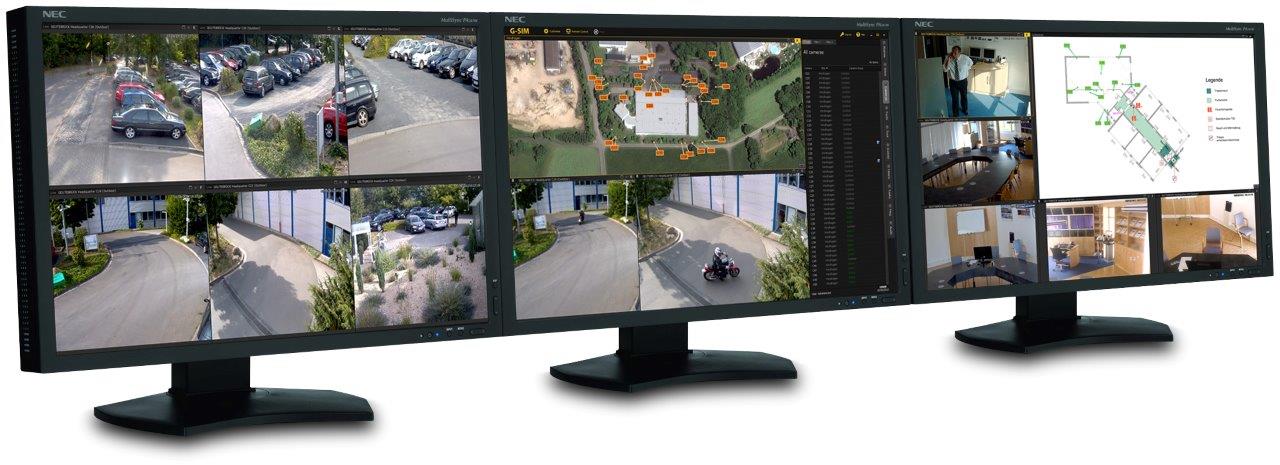
According to Brooks, what makes the G-SIM VMS better than the solutions of the opposition is that Geutebruck brings to its clients decades of experience with hundreds of thousands of successful video security systems in use.
“We have a mature technology that combines a perfect combination of in-house software and hardware components with carefully selected third-party products providing optimal functionality, a high level of reliability and the best quality possible,” he says.
Brooks argues that the key attributes of G-SIM that place it over other VMS systems include ease of use for operators, extremely low-latency and superior database management making the system faster. There’s also an extensive and flexible feature set available out-of-the-box and open platform architecture with an excellent cross-section of Geutebruck or COTS hardware, or software-only options.
“There’s great local Australian/New Zealand support and responsiveness to clients’ needs,” Brooks says. “Our friendly support team has a real understanding of the Geutebruck platform – we are not sold via a distributor. We genuinely love what we do.”
What should end users look for in a VMS?
“In a relatively short period of time we have seen the rise and rise of full-IP solutions and gone are the analogue days,” says Brooks. “But the selection of a VMS platform is not like sourcing a VHS recorder. And while IP delivers many advantages, options and lots of promise, the world of IP surveillance also comes with new risks such as the issues of longevity of investment (via backwards compatibility), interoperability of devices and future proofing. These are issues that were less of a concern in an analogue environment.
“Users should look for ease of use – training staff is expensive and time consuming. The Geutebruck Viewing GUI is intuitive, simple and powerful – the one GUI manages all video – Live, Review and Exported video – the one simple platform for all occasions.
“Reliability – reliability, reliability and reliability. Geutebruck builds redundancy and reliability into everything we do so as to maximise uptime. Our central monitoring platform, G-Health, provides clients with an extremely powerful and proactive monitoring tool with user-defined tolerances that alert the service provider and/or customer should anything go astray.”
When it comes to performance, Brooks says that speed is the key.
“Whether a user is searching for historic video or monitoring live video, speed is key. Geutebruck offer clients one of the lowest latencies when controlling cameras (a must when driving PTZ cameras) and our video retrieval is equally lightning fast.
“Users also want open platforms that provide choice and flexibility – be it hardware platforms, integrations of 3rd party systems and the ability to utilise existing infrastructure within an organisation.
“G-SIM is an enterprise grade, highly flexible and scalable platform that supports all major manufactures of IP cameras – literally thousands of IP cameras are supported along with all major compression technologies.” Anthony Brooks
“Also vital is commitment and support – everyone looks good when blue-sky sailing,” Brooks says. “However, the ability to deliver technical excellence day in, day out requires commitment and the ability to resolve problems when they arise. Geutebruck provides 24/7 component level support locally – 365 days a year. Finally, users need backwards compatibility. You need to make sure the investment of today will work tomorrow as the rate of change is extraordinary.”
What about installers – what’s important for them?
“Installers and manufacturers share many common requirements,” Brooks says. “Front and centre is the ability to deliver effective solutions; meeting/exceeding business outcomes, while delivering a measurable RIO. This fosters customer loyalty and retention and is far cheaper than customer acquisition.
“An important differential between Geutebruck and many other VMS solutions is our path to market. We are not a box-mover sold via a traditional distributor network. Rather we deal directly with our system integrators. This allows us to deliver a higher level of technical support and customisation.”
Brooks says installer/partners seek simular outcomes as end-users – with just one addition to the list and this is profitability.
“The bottom line can be significantly affected by reducing the labour costs associated with an installation, commissioning and training,” he explains.
“We deliver ease of install – including wizards and templates to help configure systems, high reliability – a system down is a cost centre, great local after-sales support is in the Geutebruck DNA, no SMA – there are no ongoing costs for the latest Software with Geutebrück – you are family, flexibility – our platform is extremely customisable – if you no longer want a black Model T Ford-style VMS, our friendly SDK makes it easy to turn it red!”
At EOS Australia, the VMS is Digifort, a robust and capable solution that is affordable upfront yet comes with no ongoing costs in any form at all. There are 4 versions of Digifort, the first being Explorer, which offers only the essential features and a maximum of 16 channels, making it ideal for small office/home office applications wanting very low cost. Digifort Standard version supplies the ideal features for the local and remote surveillance of up to 32 cameras per server and is ideal for small and mid-sized installations.
Digifort Professional supplies the ideal features for the local and remote surveillance of up to 64 cameras per server, making it perfect for small, middle and large-sized installations, guaranteeing a robust installation, with high reliability and excellent performance at a compatible cost.
Finally there’s Digifort Enterprise, which comprises all of the features available in the Digifort System, offering total management of unlimited cameras and alarm devices, and is ideal for any company that wants total control of its security project, guaranteeing high performance, reliability and scalability.

“Digifort has been integrated with more 164 brands and more than 3200 models of ONVIF cameras,” says Chong. “It’s also integrated with Samsung DVRs, DVR capture board cards, HD-SDI, HD-SDI Capture board cards, Vauban access control, Tyco C-CURE 9000, Centaur license plate recognition and there’s Carmen-driven video analytics.
“We often hear the words scalability, ease of use, powerful recording architecture, redundancy, global mapping, integration and the rest,” Chong says. “Digifort has it all, and it does it all very well without over-promising.
“And coming up our new soon-to-be-released Digifort 7.0 it will have the world’s first Digifort mobile and insight, with one of the most powerful book marking features available.
What should end users and installers seeking in a VMS?
“In my opinion, end users should look for an easy-to-use and intuitive front-end GUI, reliability and they should focus on total cost of ownership,” Chong says. “When it comes to installers, they need a solution that’s easy to configure at the commissioning stage as well as during upgrades. They also need simple licensing, reliability and a solution that’s easy to maintain and service.”
According to Chong, EOS is definitely seeing a trend towards video analytics in its applications.
“IVA brings another dimension to our CCTV solution which we never had before,” he says. “And it’s getting more reliable and more affordable.”
“We often hear the words scalability, ease of use, powerful recording architecture, redundancy, global mapping, integration and the rest. Digifort has it all.” Tooma Chong
By John Adams




